




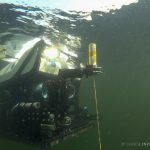
The HD-YLAKE science team has converged on Yellowstone National Park for their third and final field season. While some science teams are collecting their long-term measuring instruments from the bottom of the lake, others are continuing to make new measurements.

Bill Seyfried, Christie Cino, Chunyang Tan, and Peter Scheuermann from the University of Minnesota are using the Yogi Remote Operated Vehicle (ROV), to analyze the chemistry of the hydrothermal vents on the bottom of Yellowstone Lake.
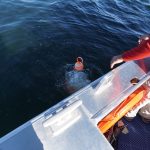
All 12 of the dual pressure and temperature (P/T) probes that were deployed on the Yellowstone Lake floor last year have been recovered!

Luke McKay, Bill Inskeep, and Pat Shanks collected gravity cores in and around the focus site northeast of Stevenson Island.
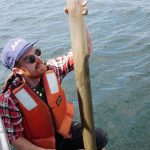
Bill Inskeep and Luke McKay are studying the microbial ecology of the sediments beneath Yellowstone Lake. Microbes, or ‘microscopic organisms’ are living things that are so small we need a microscope to see them.
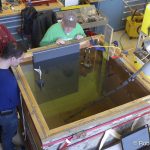
We are building a custom hydrophone (underwater microphone) unit with collaborators from IS Terre in France that will allow us to monitor acoustic signals from bubbles during the seismometer deployments. We call this instrument, The Bubblephone.
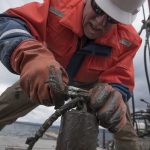
Over the next few days, the coring team collected 8 cores including one from each of the 6 sites. Several cores were 40 feet in length, and one of the cores may have penetrated into glacial flour, meaning it may provide a complete record back to the last glaciation.
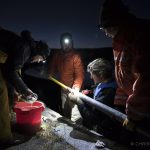
After spending the morning finishing the construction of the coring vessel, the team was eager to get out and collect their first core.
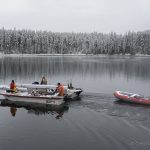
The focus of the September HD-YLAKE fieldwork is to understand the deep history of Yellowstone Lake’s hydrothermal system by studying the sediment, or mud, that has settled on the bottom of Yellowstone Lake.
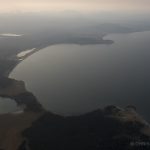
The best way to appreciate the scale of Yellowstone Lake is to see it from the air. Click on the images below for an aerial tour of Yellowstone Lake.
The Hydrothermal Dynamics of Yellowstone Lake (HD-YLAKE) project seeks to understand how earthquakes, volcanic processes, and climate affect the hydrothermal system located beneath Yellowstone Lake. All work described on this website was completed under an authorized Yellowstone Research Permit. Read more »
Visit the HD-YLAKE video page to see an animated video explaining the science behind hydrothermal explosions and see underwater footage compilations from the Yogi remotely operated vehicle.


